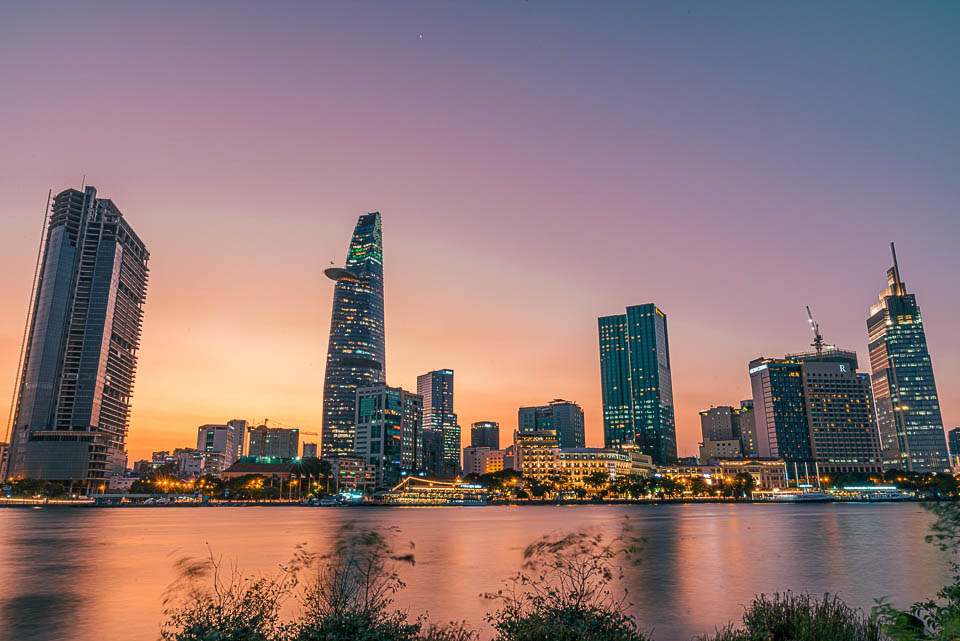
Ho Chi Minh City, also known by its ancient name Saigon, is a chaotic yet the humble commercial capital of Vietnam. There are many attractions for you to enjoy starting from the old temples, museums, shopping complexes, bustling markets and natural landscapes. The culture, food (noodle soup is a must eat!) and the entertainment options are equally amazing here. So, if you are planning a trip this year from Hong Kong, be sure to check the flights to Ho Chi Minh City with Cathay Pacific by clicking the following link!
Jade Emperor Pagoda
Jade Emperor Pagoda which is also known as Tortoise Pagoda because of the tortoises seen in the pond nearby, is one of the must-visit attractions in Ho Chi Minh City. It was built in the 20th century by Cantonese people who came to Vietnam from Guangzhou province in Southwest China in the honor of the Jade Emperor a.k.a the King of Heaven. The Jade Emperor Pagoda reflects the teachings of Mahayana Buddhism and therefore, it is completely different from most of the shrines you will see in Asia. But you can also see other Taoist deities in the shrine. There are many halls in the Jade Emperor Pagoda. Out of them, the main hall is where you can see the Jade Emperor. He is the one who decides who goes to heaven and who goes to hell according to the beliefs of the Vietnamese people. Those who are not accepted into heaven are sent on to the left side; where the King of the Hell resides to accept the sinners and send them through the ten levels of hell. The carvings of animals, dragons and punishment received in hell are notable. The place is crowded but the serene atmosphere will soothe your mind.
Cu Chi Tunnels
The Cu Chi Tunnels is great for a half-day trip because there are many things for you to see and do here. Cu Chi Tunnels are a large network of tunnels that were used in military operations, mainly as the Viet Cong’s base of operations for the Tết Offensive in 1968. The tunnels go as far as 250 kilometres and cover almost all of the underground of Ho Chi Minh City. They are having all the facilities in which the soldiers need to survive; kitchen areas, living areas, hiding spots, hospitals, food storage, weapon storage rooms etc. You can also see air filtration systems which aided the Vietnamese soldiers to survive in the extreme environments of the Chu Chi carpet-bombings. You can explore the tunnels on your own but before that, a short documentary is shown about the Cu Chi Tunnels to get a better understanding. You can also try shooting here; the cost will be about VND 35,000 per bullet and the package consists of an M16 rifle with a minimum of 10 bullets Also, you should be careful not to take this tour if you are not comfortable in enclosed places or has breathing difficulties. You can also buy souvenirs and try the local food at the end of the tour available in both veg and non-veg ranges.
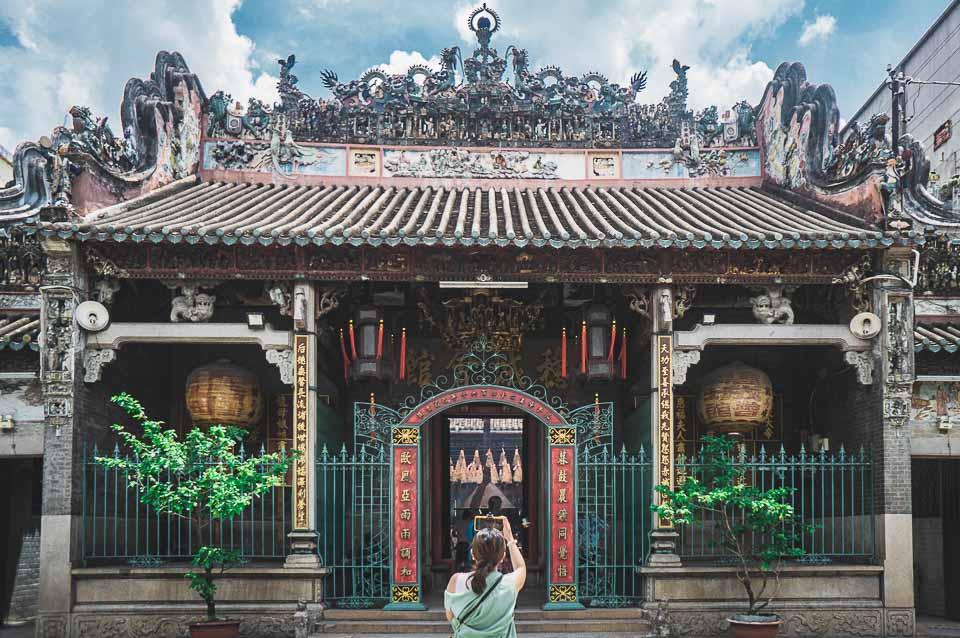
War Remnants Museum
The War Remnants Museum is one of the most visited museums in Vietnam and it contains exhibits relating to the First Indochina War and the Vietnam War. Most of the exhibits are photographic exhibits displaying the brutality of war and the effects of Agent Orange chemical spray. One part of the museum contains ‘tiger cages’ that were used to hold political prisoners of Vietnam. However, you can also see military equipment like UH-1 “Huey” helicopter, A-1 Skyraider attack bomber, an F-5A fighter, a BLU-82 “Daisy Cutter” bomb, M48 Patton tank, and an A-37 Dragonfly attack bomber.
Also read: A guide to exploring the Saigon war remnant museum!
Thiên Hau Temple
Thien Hau Temple which is also known as the Pagoda of the Lady Thien Hau is a Chinese architectural style temple located in the Chinatown of Ho Chi Minh City. It is dedicated to the Chinese sea goddess Mazu, she was a girl who saved one of the family members during a typhoon using her psychic powers. The worship is carried out as a separate religion by the local people of Vietnam as Mazuism although it is not officially recognized by the government of the Chinese mainland. The roof is adorned with beautifully done porcelain figurines depicting the ways of Chinese religions and culture. The interior of the Thien Hau Temple is also spectacular as the exteriors. The interiors have a courtyard and within its roof, you can some porcelain dioramas depicting the way of how the city was in the 19th-century. There are three statues of the goddess Mazu of all which have bronze-coloured faces and vibrant clothing. There is a festival too, held in the third lunar month of the Chinese calendar in the name of the goddess Mazu and this parade displays a figure of the goddess itself.
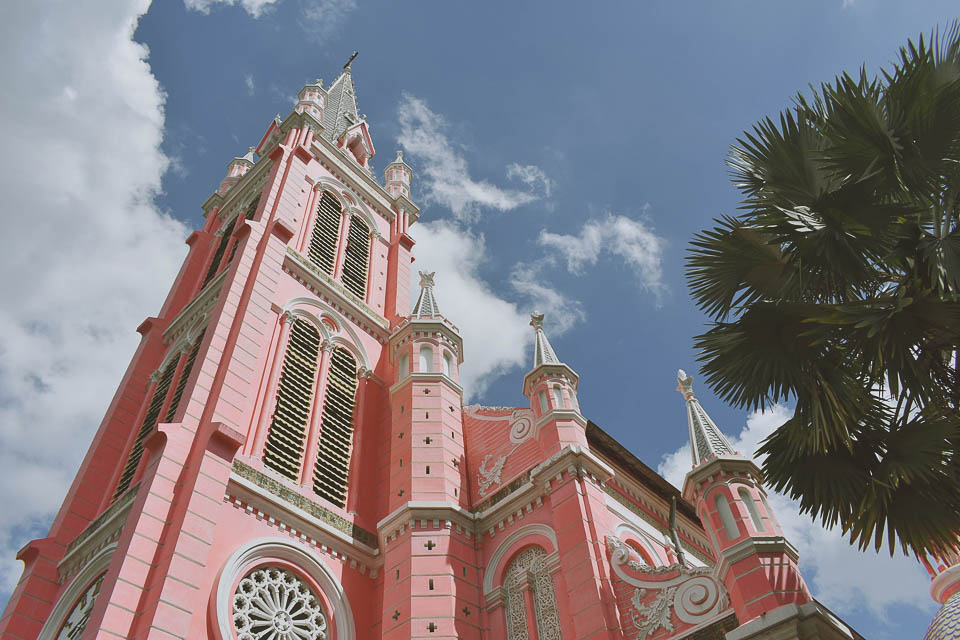
Saigon Opera House
Saigon Opera House which is also known as the Municipal Theatre of Ho Chi Minh City is located in Le Loi Avenue and it is the perfect example for French Colonial architecture in Vietnam. It was declared as a national relic of Vietnam in 2012. Saigon Opera House was built by the French architect Eugène Ferret in 1897. The architecture here is pretty impressive as it is influenced by the flamboyant style of the French Third Republic mainly to entertain French Colonists. The facade in the Saigon Opera House is shaped like the Petit Palais which was built in the same year in France. There are nicely carved stone ornaments and statues at the entrance of the opera house. Most of the materials used to build the Saigon Opera House was imported FROM France. It was used as the home of the Lower House assembly of South Vietnam after 1956 and was then converted again to an Opera House in 1975. However, to see the inside of the Saigon Opera House you should buy a ticket and see a show. Originally there was seating capacity for 1800 people here but now only 500 people can be accommodated in it. The auditorium is echo-free and offers a good view of the show from every seat.
Notre Dame Cathedral
Notre Dame Cathedral Basilica of Saigon was established by the French colonists in Vietnam by the name Church of Saigon between the years 1863 and 1880. It was constructed using red bricks and therefore, it is an iconic structure in the Ho Chi Minh City. Every material used for the construction was imported from France. The architecture you see here is a perfect example of Neo-Romanesque architectural style. One of the most notable features of the Notre Dame Cathedral is its twin bell towers with 6 bronze bells rising to a height of 60 meters in the city. The stained glass windows are also notable; it includes 56 squares of stained glass by Lorin from Chartres, France. The best time to visit the Notre Dame Cathedral is during Sunday mass at 09:30 but you should be careful not to disturb the religious practices inside the cathedral while exploring it.
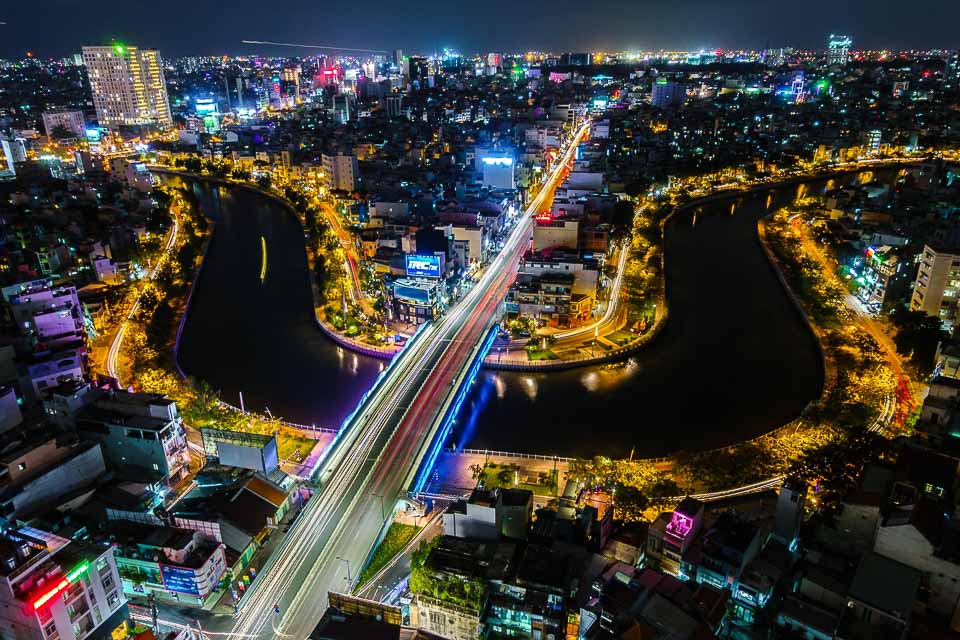
Bitexco Financial Tower and Sky Deck
Bitexco Financial Tower and SkyDeck are must-visit attractions in Ho Chi Minh City, Vietnam. The tower rises to a height of 262.5 meters making it the second tallest building in the city and the 263rd tallest in the world as of present. There are 68 floors in total; you can see office spaces, food courts and the observation deck on the 49th floor. The tickets for the Sky Observation Deck is about $10 per person. There is a non-rooftop helipad on the 52nd floor of the Bitexco Financial Tower and it can hold a helicopter that weighs about 3 tons. Speaking of the observation deck, what can you imagine about the views it has to offer when you get to the top of it? Yes, the views are incredible 360-degree views of the entire Ho Chi Minh City, the best thing you can do is to visit in the evening hours and to relax in the Alto Sky Bar while sipping a cocktail or two!
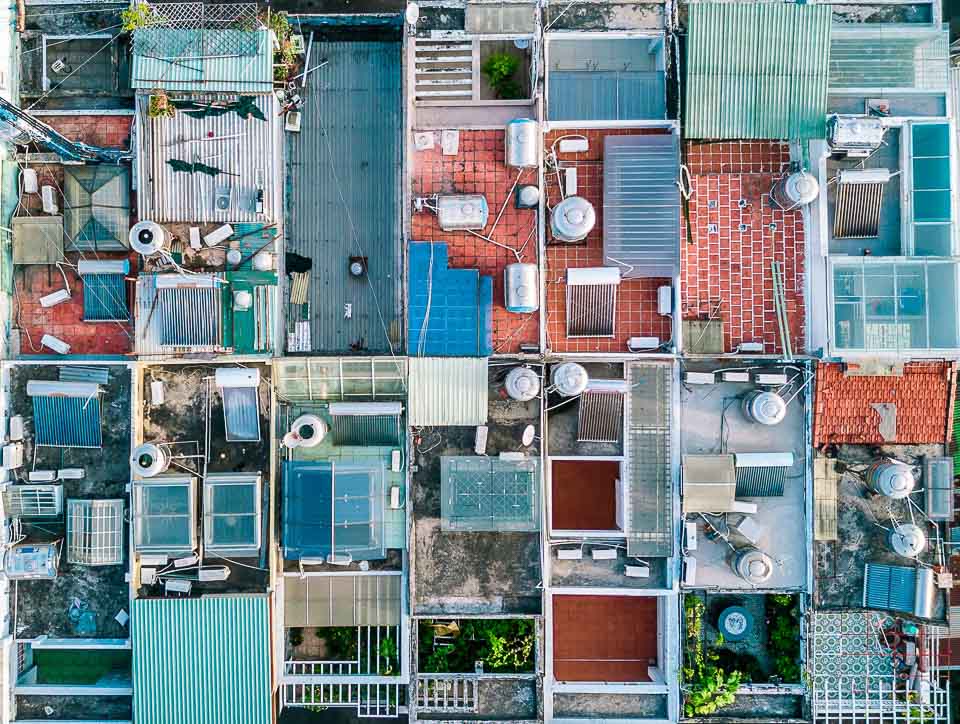
Ben Thanh Market
Ben Thanh Market is located in District 1 of Ho Chi Minh City of Vietnam. It was established in the 1800s by the French colonists and therefore, it can be considered the oldest market in the city. This is where you should go if you want to buy anything for cheap prices; food, textiles, leather goods, handicraft items, watches, shoes, electronics, spices, souvenirs, artworks and so on. Ben Thanh Market is an all year round market but it is best to avoid the visit if you are in Ho Chi Minh City in the hottest months of the year because the atmosphere can be unbearable with the large crowds. However, there are two options you can choose from, the day market and the night market. The night market is very soothing and it is open until 10.00 pm daily.
This post may contain affiliate links. Please read the disclosure post. If you have liked the article, you may support it by buying using these links without any extra cost to you.
Let’s stay connected on Facebook, Instagram, Twitter! You may also consider joining my mailing list. I send travel and photography related emails only once a month!